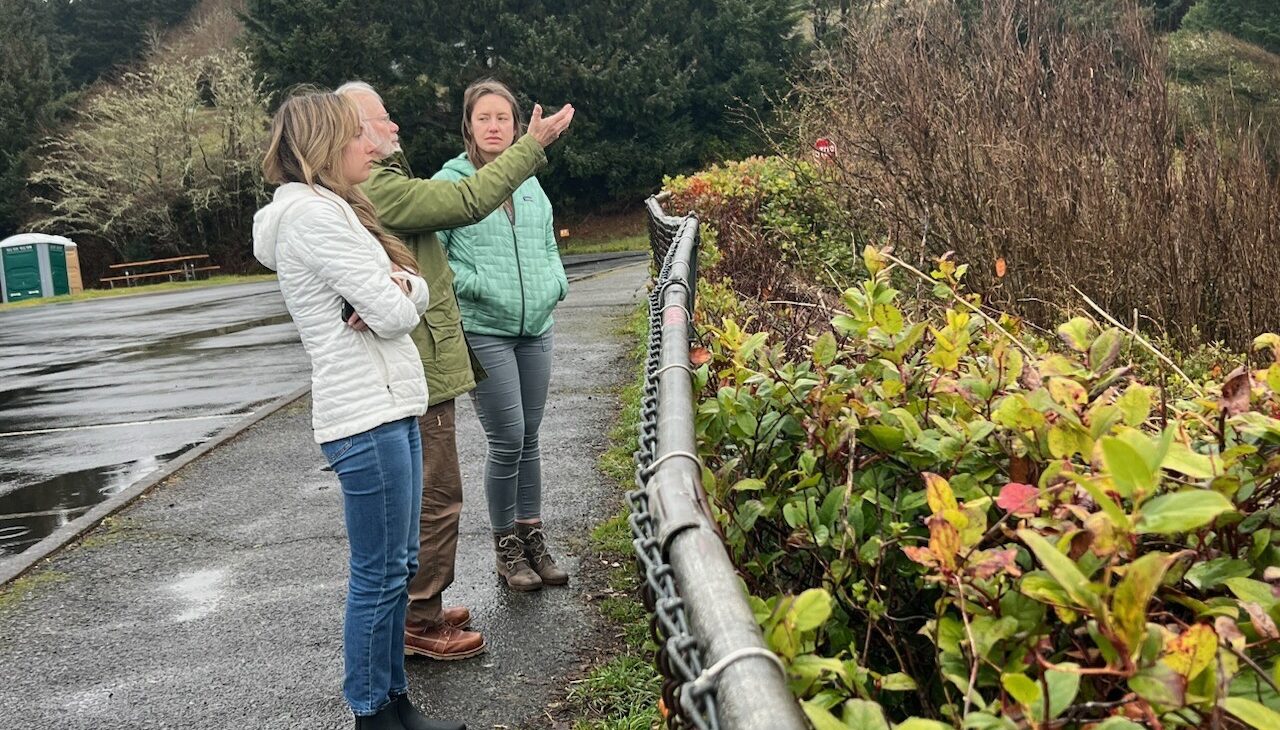Photo: From left to right: OSU master’s student Jenny Waldo, Marine Reserves Human Dimensions Project Leader Tommy Swearingen, and OSU professor Dr. Megan Jones viewing the Otter Rock Marine Reserve. Photo by Mark Freeman.
The Marine Reserves Program is teaming up with two Oregon State University (OSU) researchers to study whether visiting Oregon beaches and other coastal access points can trigger personal changes that reduce global warming’s impacts. The study will focus on education and outreach about ocean acidification.
Ocean acidification is the byproduct of increased carbon dioxide dissolved in sea water over the past two centuries. It triggers chemical reactions that make seawater more acidic, impacting the entire ocean food web from fish to shellfish.
“Climate change is happening in everybody’s backyard and it’s happening globally,” says Dr. Megan Jones, the OSU conservation social scientist overseeing the study by master’s student Jennifer Waldo. “You don’t see OA (ocean acidification) with your naked eye, but it’s affecting local marine life and industries. Maybe this will make something abstract feel more relevant to people.” By adding this relevancy, researchers hope to gauge whether this spurs interviewees to make lifestyle changes that reduce their carbon footprint.
Four interviewers hope to garner about 2,000 interviews with ocean visitors at 23 sites, many at or near Oregon’s five marine reserves. The interviews will occur over a 10-week period beginning in June. The visitor interviews will be complemented by an online survey of about 1,400 Oregonians designed to investigate effective messages about ocean acidification. Marine Reserves’ Thomas “Tommy” Swearingen, Project Leader for the program’s human dimensions efforts, is helping with the study.
